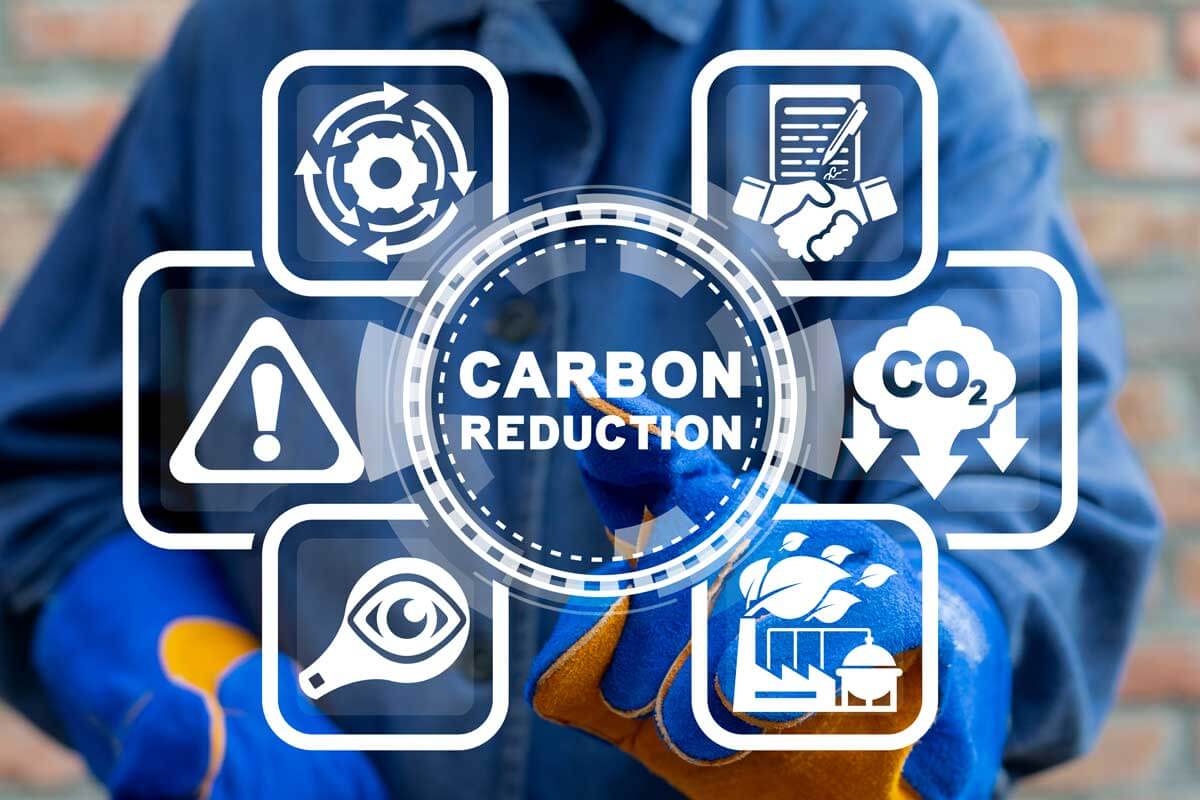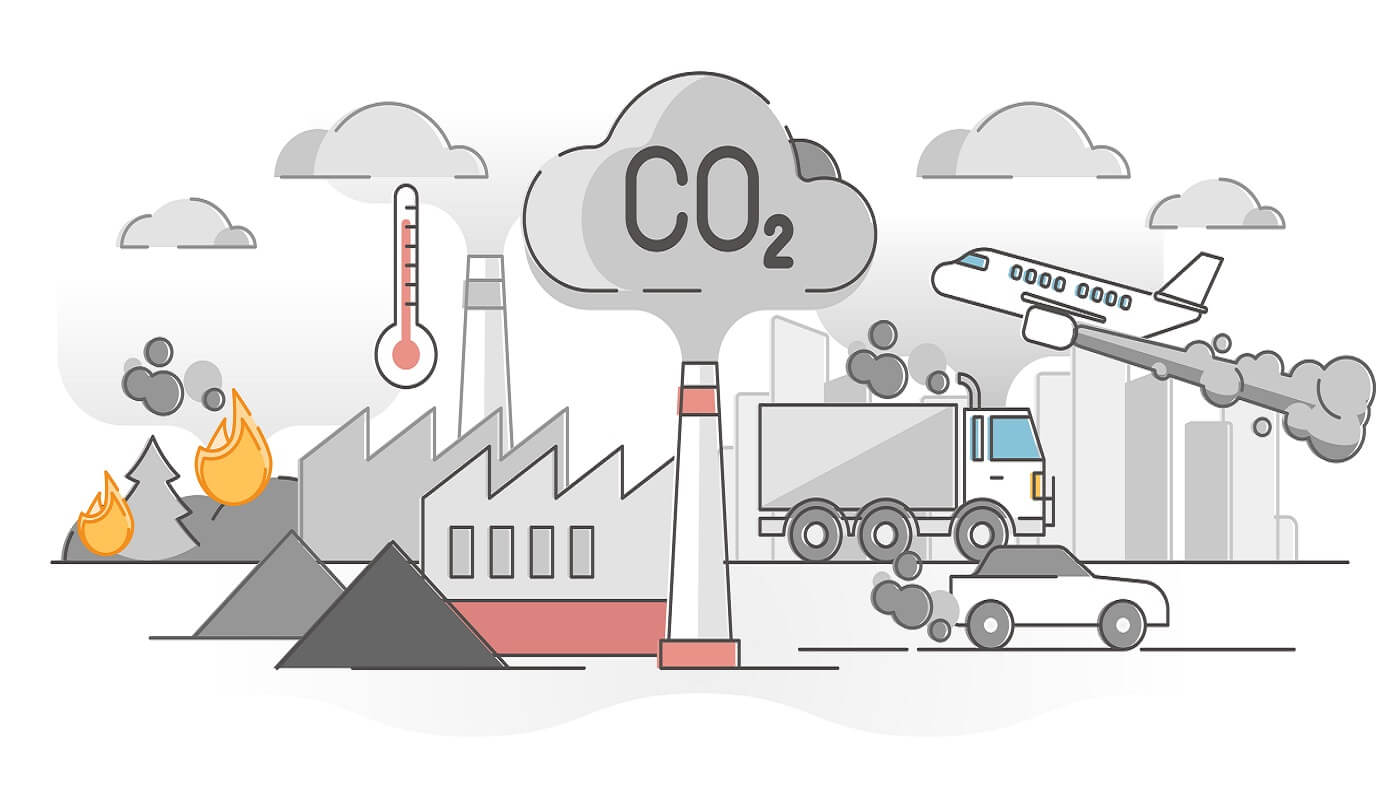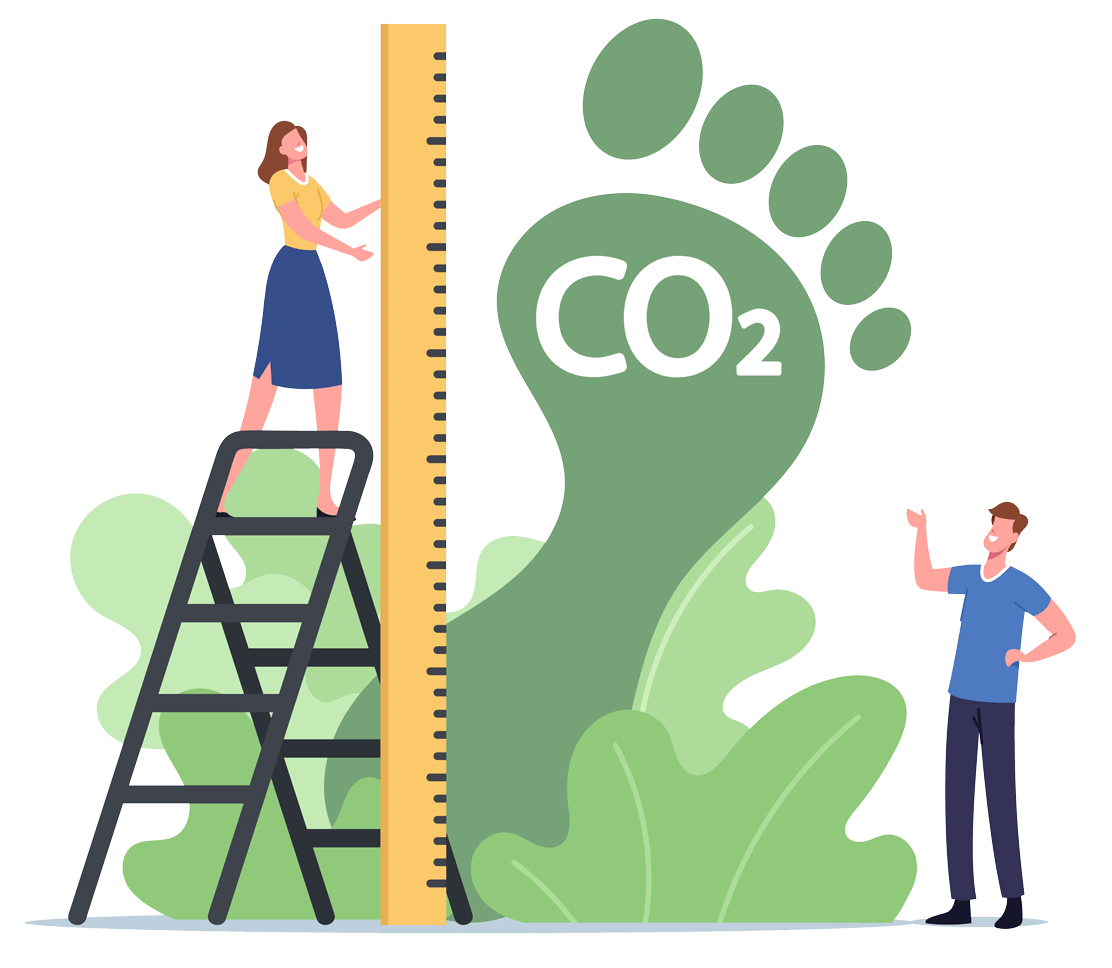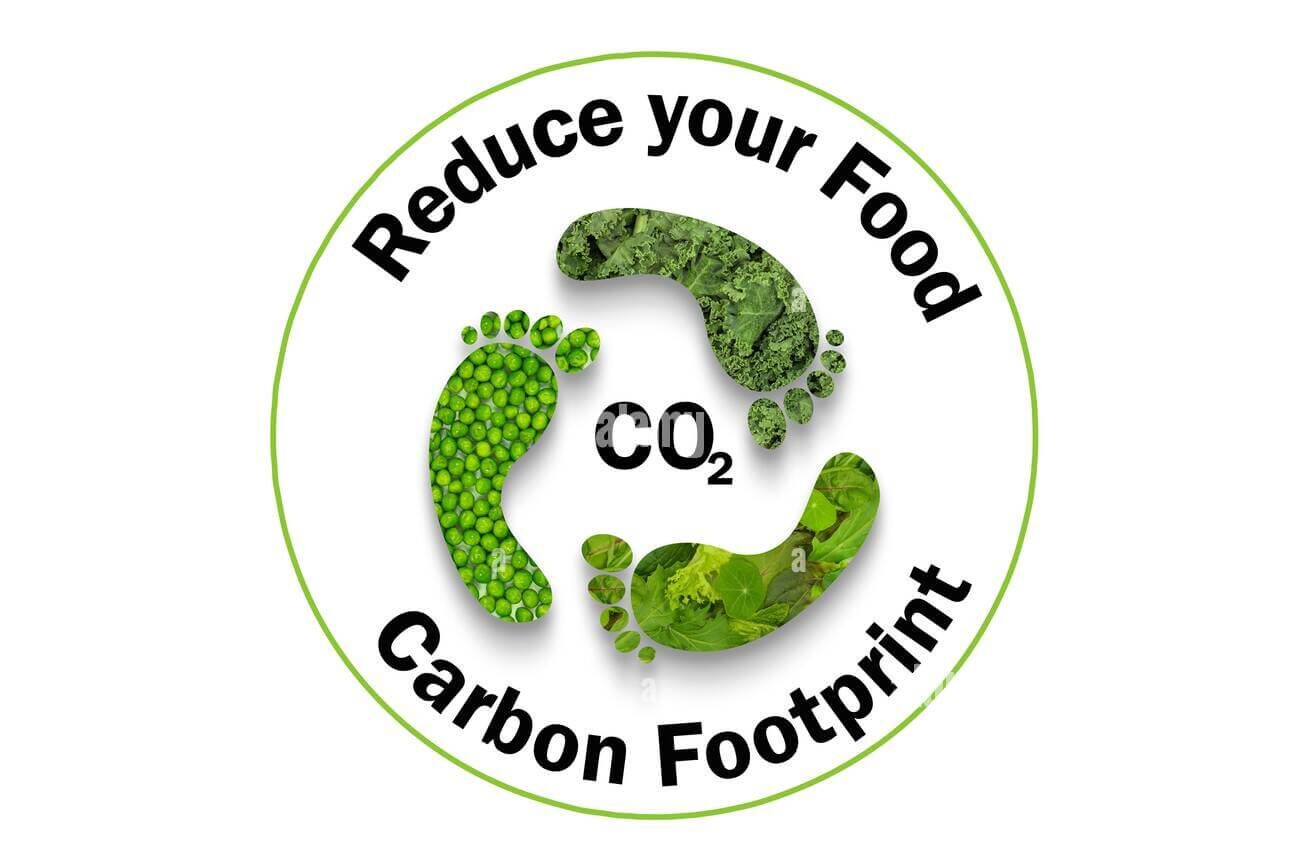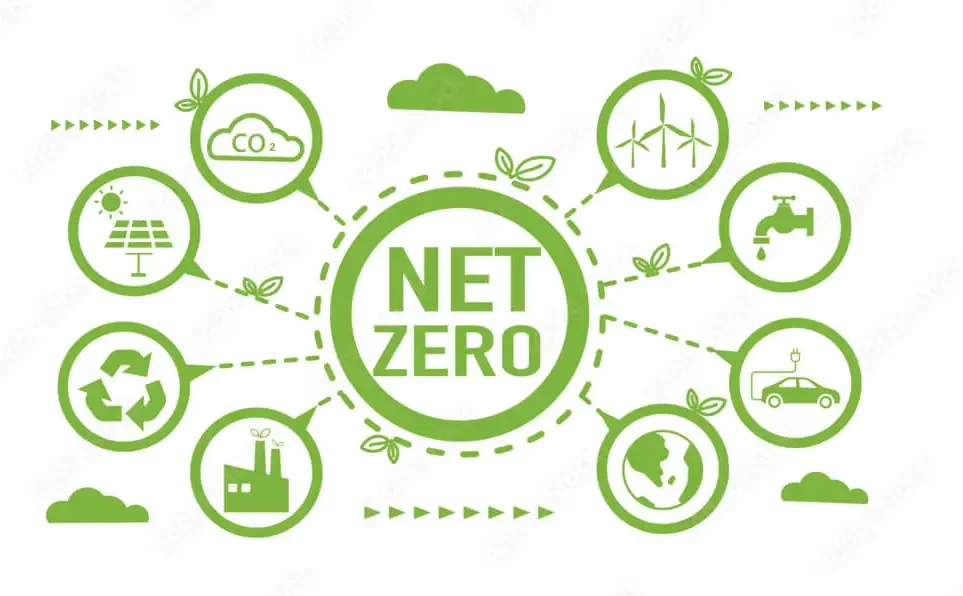
Personal carbon footprint
When it comes to addressing climate change, understanding and reducing our personal carbon footprints plays a crucial role.
But what exactly is a personal carbon footprint? It refers to the total amount of greenhouse gasses emitted as a result of an individual’s activities.
These greenhouse gasses, including carbon dioxide and methane, are generated by various aspects of our daily lives such as:
- Energy consumption
- Transportation
- Food choices
- Waste generation.
Reducing our personal carbon footprints is essential because these emissions contribute to the overall increase in greenhouse gasses in the atmosphere, leading to global warming and climate change.
By taking steps to shrink our carbon footprints, we can help mitigate the impact of climate change and create a more sustainable future.
In this article you will learn about your personal carbon footprint as follows:In this article you will learn about your personal carbon footprint as follows:
- The definition of a personal carbon footprint and why it is important to understand and reduce it.
- How to calculate your personal carbon footprint using online tools and gather relevant data.
- The key contributors to a personal carbon footprint, including energy consumption, transportation, food and diet, and waste generation.
- Strategies for reducing your personal carbon footprint, including energy efficiency, sustainable transportation, sustainable diet, and waste reduction and recycling.
- The concept of carbon offsetting and how to select reliable offset projects.
- The importance of tracking and monitoring progress in reducing your carbon footprint, setting goals, and celebrating milestones.
- Additional resources for further support in reducing personal carbon footprints.
Contributor | Impact | Reduction Strategies |
Home Electricity Usage | Significant | – Opt for energy-efficient appliances – Improve home insulation – Explore renewable energy sources |
Energy Efficiency Solutions | Significant | – Install programmable thermostats – Use smart power strips – Replace incandescent bulbs with LED lighting |
Transportation
Transportation is another major contributor to personal carbon footprints.
The emissions generated by cars, public transportation, and air travel significantly impact our overall carbon footprint.
Contributor | Impact | Reduction Strategies |
Individual Transportation | Significant | – Carpooling – Opt for public transportation – Choose cycling or walking for shorter distances |
Sustainable Transportation Alternatives | Significant | – Invest in public transportation infrastructure – Develop cycling lanes – Promote electric vehicles |
Food and Diet
Our dietary choices also have a significant impact on our carbon footprints.
The production, processing, and transportation of food contribute to greenhouse gas emissions.
Contributor | Impact | Reduction Strategies |
Carbon Footprint of Food Choices | Significant | – Adopt a plant-based diet – Choose locally sourced food – Minimize food waste |
Sustainable Diet Options | Significant | – Incorporate more plant-based meals – Choose locally sourced food – Minimize food waste |
Waste Generation
Waste generation is another significant contributor to carbon emissions. When organic waste decomposes in landfills, it releases methane, a powerful greenhouse gas.
Contributor | Impact | Reduction Strategies |
Waste Management | Significant | – Recycle properly – Compost organic waste – Embrace conscious consumption |
Calculating Your Personal Carbon Footprint
To effectively reduce our carbon footprints, it’s crucial to first understand the extent of our emissions.
Fortunately, there are online tools available known as carbon footprint calculators that can help us estimate our carbon footprints based on various factors.
These calculators take into account our energy usage, transportation habits, waste disposal methods, and lifestyle choices.
One such carbon footprint calculator is provided by the United States Environmental Protection Agency (EPA).
Their Household Carbon Footprint Calculator considers energy usage, transportation habits, and waste disposal practices.
It offers options for reducing emissions in each area and calculates potential savings.
Another popular carbon footprint calculator is offered by carbonfootprint.com.
It allows individuals to calculate their carbon emissions from:
- Buildings
- Cars
- Flights
Users can create an account, save and update their calculations, enter more information, and track their progress over time.
Calculating your personal carbon footprint involves gathering relevant data from various sources.
For energy consumption, you may need to refer to your electricity bills to determine your usage.
Transportation mileage can be obtained from your vehicle’s odometer readings or by using mobile apps that track your travel.
Waste generation can be estimated by monitoring your trash output or referring to waste disposal records.
By utilizing these carbon footprint calculators and collecting accurate data, you can gain a comprehensive understanding of your current emissions.
Identifying Key Contributors to Your Carbon Footprint
Understanding the major contributors to your personal carbon footprint is essential in formulating effective strategies for reduction.
Let’s explore some of the key areas that significantly impact our carbon footprints.
Energy Consumption
Energy consumption is one of the primary contributors to carbon emissions in our daily lives.
Our homes, appliances, and heating or cooling systems heavily rely on energy sources that often emit greenhouse gasses.
1. Home Electricity Usage
The electricity we consume at home accounts for a significant portion of our carbon footprints.
- Appliances.
- Lighting.
- Heating and cooling systems.
To reduce this impact, consider the following tips:
- Energy-Efficient Appliances: Opt for appliances with high energy-efficiency ratings, such as ENERGY STAR certified products.
These appliances are designed to use less energy while providing the same level of functionality. - Improved Insulation: Properly insulate your home to minimize heat loss during winters and heat gain during summers.
This reduces the need for excessive heating or cooling, thereby reducing energy consumption. - Renewable Energy Sources: Explore the possibility of installing solar panels or utilizing wind energy to power your home.
These renewable energy sources produce clean energy and significantly reduce carbon emissions.
2. Energy Efficiency Solutions
In addition to making smarter choices regarding appliances and energy sources, there are several energy efficiency solutions that can help you reduce your carbon footprint:
- Programmable Thermostats: Install programmable thermostats that allow you to schedule temperature adjustments based on your daily routine.
This prevents unnecessary heating or cooling when you are not at home. - Smart Power Strips: Use smart power strips that automatically cut off power to electronic devices when they are not in use.
This helps eliminate phantom energy consumption. - LED Lighting: Replace traditional incandescent bulbs with energy-efficient LED bulbs.
LED lights consume significantly less energy and have a longer lifespan.
Transportation
Transportation is another major contributor to personal carbon footprints.
The emissions generated by:
- Cars
- Public transportation
- Air travel
Significantly impact our overall carbon footprint.
1. Individual Transportation
The average car emits a substantial amount of greenhouse gasses, primarily carbon dioxide, during daily commutes and long-distance travel.
To reduce the impact of individual transportation, consider the following alternatives:
- Carpooling: Share rides with co-workers, neighbors, or friends who travel in the same direction. Carpooling not only reduces carbon emissions but also helps reduce traffic congestion.
- Public Transportation: Opt for public transportation options whenever possible. Buses, trains, and subways are more carbon-efficient alternatives to individual car travel.
- Cycling or Walking: For shorter distances, consider cycling or walking instead of driving. These modes of transportation are not only environmentally friendly but also promote a healthier lifestyle.
2. Sustainable Transportation Alternatives
Beyond the individual level, communities and cities can adopt sustainable transportation alternatives to reduce carbon emissions.
Investment infrastructure:
- Public transportation
- Development of cycling lanes
- Promotion of electric vehicles
Some effective strategies.
Food and Diet
Our dietary choices also have a significant impact on our carbon footprints:
- Production
- Processing
- Transportation of food
Contribute to greenhouse gas emissions.
1. Carbon Footprint of Food Choices
Food choices, particularly meat consumption, have a substantial carbon footprint.
The production of meat, especially beef and lamb, requires large amounts of land, water, and feed, leading to significant greenhouse gas emissions.
Additionally, certain agricultural practices, such as the use of synthetic fertilizers, contribute to the release of nitrous oxide
2. Sustainable Diet Options
Adopting a more sustainable diet can significantly reduce your carbon footprint. Consider the following options:
- Plant-Based Diet: Incorporate more plant-based meals into your diet.
Plant-based foods such as:
-Fruits
-Vegetables
-Legumes
-Whole grains
Have a lower carbon footprint compared to animal-based products. - Locally Sourced Food: Choose locally sourced foods whenever possible.
Locally produced food reduces transportation emissions associated with long-distance shipping. - Food Waste Reduction: Minimize food waste by planning meals proper storage.
Food waste in landfills generates methane, a potent greenhouse gas.
Waste Generation
Waste generation is another significant contributor to carbon emissions.
When organic waste decomposes in landfills, it releases methane, a powerful greenhouse gas.
1. Waste Management
Proper waste management is crucial in reducing carbon emissions associated with waste.
Opting for sustainable waste management practices can significantly contribute to carbon footprint reduction. Consider the following:
- Recycling: Separate recyclable materials from your regular waste and ensure they are properly recycled.
Recycling reduces the need for raw material extraction and energy-intensive manufacturing processes. - Composting: Compost organic waste such as food scraps, yard trimmings, and paper products.
Composting not only reduces methane emissions but also produces nutrient-rich soil for gardening. - Conscious Consumption: Embrace conscious consumption by reducing unnecessary packaging and single-use items.
Choose products with minimal packaging or opt for reusable alternatives.
Strategies for Reducing Your Personal Carbon Footprint
Now let’s explore strategies for effectively reducing their carbon footprint.
By implementing these strategies, we can make significant progress in shrinking our carbon footprints and contributing to a more sustainable future.
Energy Efficiency
In addition to the energy efficiency solutions mentioned earlier, here are a few more tips to reduce energy consumption at home:
- Proper Insulation: Regularly check and upgrade insulation to ensure maximum energy efficiency.
- Natural Lighting: Utilize natural lighting during the day to reduce the need for artificial lighting.
- Unplug Electronics: Unplug electronic devices and chargers when not in use to eliminate standby power consumption.
- Lower Water Heater Temperature: Lower the temperature of your water heater to reduce energy consumption.
Sustainable Transportation
In addition to carpooling and utilizing public transportation, consider the following strategies for sustainable transportation:
- Electric Vehicles: If feasible, switch to an electric vehicle (EV) or a hybrid vehicle. EVs produce zero tailpipe emissions and significantly reduce carbon footprints.
- Active Transportation: Prioritize walking or cycling for short trips instead of relying on motorized transportation.
- Telecommuting: Whenever possible, work from home or utilize remote work options to reduce commuting emissions.
Sustainable Diet
Building on the concept of sustainable diets, here are some additional strategies to reduce your carbon footprint through your food choices:
- Seasonal and Organic Foods: Choose seasonal and organic foods to support sustainable agricultural practices and reduce reliance on synthetic fertilizers and pesticides.
- Meatless Meals: Dedicate certain days of the week to meatless
Conclusion
We identify the main factors that contribute to our personal carbon footprint, such as energy consumption, transportation, food and waste generation.
For each of these factors, we provide practical strategies to reduce our carbon footprint.
For energy consumption, we mention the importance of opting for energy-efficient appliances, improving the energy efficiency of our homes, and considering renewable energy sources.
In the area of transportation, we explored options such as car sharing, using public transportation and choosing more sustainable modes of transportation, such as cycling or walking.
On the topic of food and diet, we highlighted how our food choices can influence our carbon footprint and proposed alternatives such as a plant-based diet, locally sourced food and reducing food waste.
Finally, we provided additional strategies for improving energy efficiency in the home, promoting sustainable transportation and adopting a more sustainable diet, how to choose seasonal foods, and reducing meat consumption.
In summary, this article provides a comprehensive and practical guide to understanding, calculating and reducing our personal carbon footprint, which will contribute to a more sustainable lifestyle and the fight against climate change.
It is essential that we all take concrete steps to reduce our emissions and create a positive impact on the environment.
What causes carbon footprint? From everyday activities to industrial impacts, learn how to mitigate your environmental footprint effectively."
Understand carbon footprint units like CO2e and kilograms to measure and reduce your environmental impact effectively.
Explore the different carbon footprint types—direct, indirect, embodied, and product—and learn strategies to reduce your environmental impact effectively.
Learn how to reduce your personal carbon footprint with practical strategies on energy, transportation, diet, and waste. Make a sustainable impact today.
Discover practical tips on reducing your water carbon footprint. Learn about water-saving strategies and their impact on climate change in this enlightening guide.
Offset your carbon footprint effectively with expert guidance. Understand the impact of your daily activities on emissions, calculate your footprint accurately, and support reputable offset projects.
Learn practical ways to reduce your carbon footprint & fight climate change. From energy conservation to sustainable transportation & eco-friendly diets, take steps for a greener future!
The secrets of reducing your carbon footprint in products. Learn the importance, calculation methods, and actionable strategies for a sustainable future. Dive in now!
Sustainable strategies to shrink your carbon footprint. Learn eco-friendly practices for a greener lifestyle. Act now for a better world!
Ecuador's Zero Carbon Programme is a testament to the country's commitment to sustainability, setting a global example. This guide highlights the program's strategies, benefits, and how businesses can align with these green initiatives.
Discover the importance of Carbon Reporting in our analysis of Carbon accounting. Learn how to communicate your sustainability efforts clearly and transparently. Read more
Global Net Zero Programs leading the charge towards sustainability. From Latin America's innovative policies to the EU's Green Deal, this guide illuminates the path to a greener future for businesses, policymakers, and individuals.

